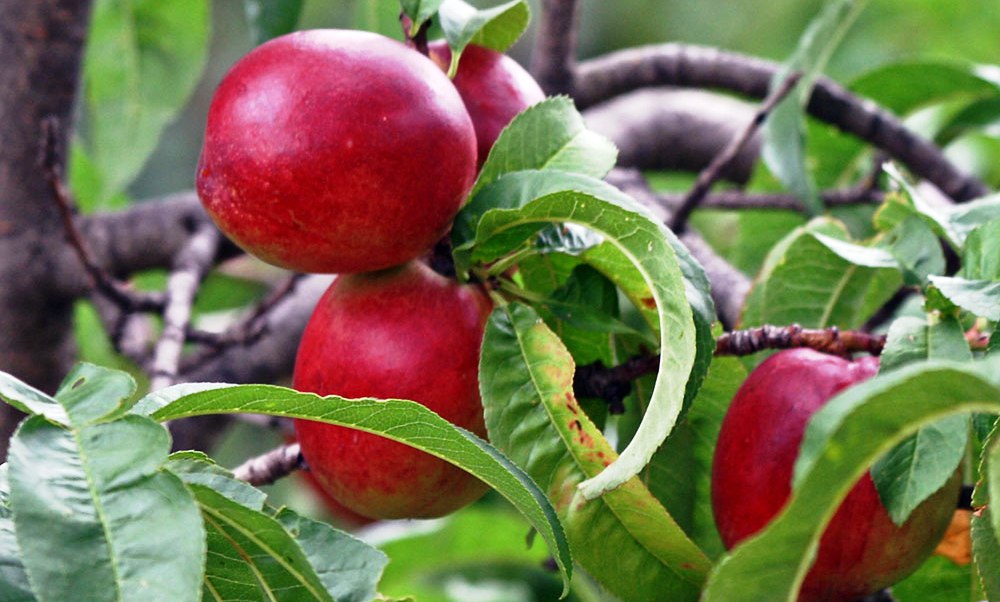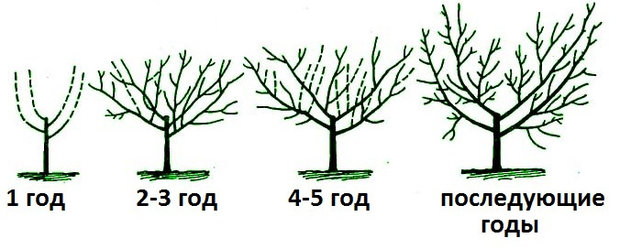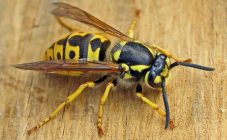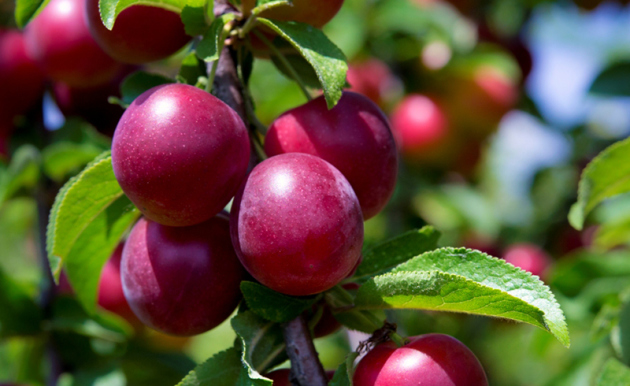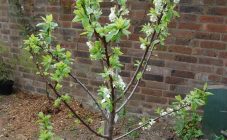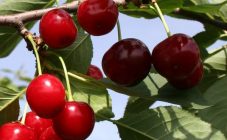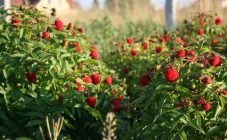Content:
Many gardeners who first encountered such a plant as a smooth-skinned peach begin to wonder: is nectarine a hybrid of a peach and what? However, another situation is also possible: a person may know such a fruit, but he does not know what the bald peach is called.
Fruit history
In general, people have known nectarine for about 2,000 years. The vastness of China is considered to be the homeland of its growth. At the same time, experts still doubt the artificial origin of this culture. According to some reports, the absence of a kind of "cannon" that covers all peaches is just a natural feature, which was successfully noticed and later reinforced by ancient gardeners.
However, at the same time, there is a widespread version that the bald peach is one of the hybrids. This raises the question: is nectarine a mixture of a peach with what? The most common version is that in the creation of this fruit, the peach could be crossed with such fruit crops as the Chinese plum, as well as apricot and almond. At the same time, many parameters, such as the appearance and technology of growing nectarine, are very similar to those of a peach, and therefore some experts tend to consider this fruit just a kind of peach.
A smooth-skinned peach can reach a height of six to seven meters. Its flowering occurs before foliage begins to appear and falls during April-May. Nectarine and peach fruit share such common points as color, pleasant aroma, size and shape. The stone can either be easily separated from the pulp, or practically not separated. The differences between the fruits of these plants are in the absence of pubescence in nectarines, as well as a higher density of the fruit pulp. Moreover, it can have a more pronounced shade in its brightness. As for the ripening time of the crop, they practically coincide in these two crops.
Different varieties of nectarines
Nectarine is the result of crossing a peach. However, it has not yet been possible to accurately establish other cultures with which it was "combined". Despite this, there is a fairly active breeding of new varieties of this fruit tree and the improvement of old ones. All of them have certain differences, thanks to the knowledge of which one can more successfully grow this rather whimsical fruit.
The most common varieties that quite successfully "take root" even in the cold climate of our country are:
- Stark Red and Crimson Gold;
- also quite often gardeners buy seedlings of varieties "Lyubimets", "Fantasy" and "Hemus";
- the varieties "Lola" and "Krymchanin" are especially winter-hardy;
- for industrial cultivation, the “Kharko” variety is very often chosen, as it stands out for its increased yield, as well as excellent characteristics in terms of transportation.
Growing nectarines
The first thing to know before growing nectarine is the soil types that work best for this plant.It is best that the land on the site where the nectarine will be grown has a sandy loam or loamy type. The choice of a site with heavy clay soil is unacceptable, since in such conditions the seedling simply will not take root. Also, you should not plant nectarine in a place characterized by a high level of groundwater, as this will have a detrimental effect on its root system.
Peach nectarine is a light-loving plant. Shade from buildings or other larger trees should obscure it for no more than two hours during the day.
Also for this culture, a problem such as the defeat of aphids is possible. At the same time, all the foliage is curled, trees can completely lose the ability to photosynthesize and, accordingly, die.
Landing
In the process of planting a peach, certain features should be taken into account:
- Before planting the nectarine, it is necessary to dig a hole approximately 0.8 by 0.8 in size. A bucket of compost or rotted manure should be added to it. Superphosphate mixed with earth is also added to it in an amount of 150 grams. This approach will allow you not to fertilize the tree for about five years, since there will be enough nutrients for it just for this period of time.
- Then it is necessary to lower the seedling into the hole, having previously straightened its root system. In this case, it is necessary to make sure that the place of his inoculation rises above ground level by at least a few centimeters. To avoid damage, the plant can be secured using a peg driven in for this purpose.
- After that, the hole is compacted and filled with water (water should be 40-50 liters, depending on soil moisture). You also need to mulch it with compost (its layer should be about 10 centimeters).
Care
In order to grow a good nectarine, the tree must be well tended. In this case, the recommendations will not be too different from the care of other fruit crops. First of all, it is necessary to keep the territory in which this peach hybrid grows clean, to water it in a timely manner, to loosen the soil and add necessary nutrients to it.
In addition, in order to get a good harvest of this crop in the future, you should properly prune the tree. For this, the plant must be given a cupped shape without a central trunk. This approach will provide enough sunlight for all branches.
After the tree begins to bear fruit (often this period occurs after three to four years from the moment of planting), it is necessary to remove the generative buds (no more than five of them should remain on each branch). This will minimize the load on the branches and significantly improve the quality of the fruit. This operation must be carried out every spring.
Plant propagation
Reproduction of nectarines is often done by budding. The best stocks are regular peaches and almonds. To a lesser extent, plums and apricots are suitable for this role, which allows you to get at least an approximate answer to the question of what the peach was crossed with to get nectarine.
Benefits of nectarines
Despite all the similarities, the difference between nectarine and peach is quite large. Nectarine, in comparison with other types of similar crops, has quite serious differences in terms of advantages:
- Hypoallergenic. Due to the absence of a fluff on the surface of the peel, nectarine does not cause the irritation that often occurs after eating regular peaches.
- You should also pay attention to the excellent taste of the fruit. After all, the very name "nectarine" comes from the word "nectar". This indicates that the fruit differs from the regular peach in its higher sugar content.
- It should also be remembered that nectarines have a long shelf life. This is due to the greater density of their pulp, as well as the better ability of the peel to retain moisture inside the fruit. Accordingly, the nectarine will retain its elasticity, presentation and taste for a longer time.
All these factors allow nectarine to remain a fairly popular crop, if not in terms of cultivation, then at least in terms of consumption.
